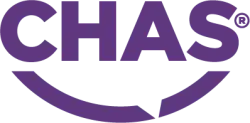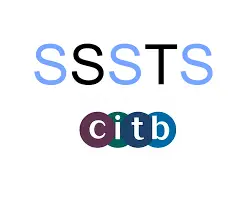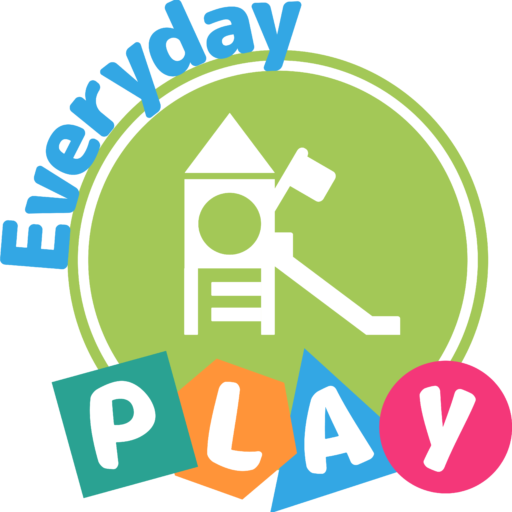Playground Safety in the UK: What You Need to Know - Playground Safety Standards & Laws
If you have a playground – or are planning to install one – it’s vital to understand the latest safety standards and relevant legislation. Staying informed helps ensure that your playground is not only fun but also safe for every child who uses it.
Whether you’re choosing a supplier that complies with current safety guidelines or upgrading an existing site to meet legal requirements, being proactive is key.
To support you, we’ve provided a brief overview of the key safety laws and standards affecting playgrounds in the UK.
Playground Safety Laws
UK playground legislation is regularly updated, so it’s essential that any company you work with for installation or maintenance keeps pace with the latest changes.
At present, the below legal frameworks are particularly important for anyone responsible for a playground.
At Everyday Play, safety is our top priority. We are proud members of ROSPA (The Royal Society for the Prevention of Accidents) and fully accredited by the Contractors Health and Safety Assessment Scheme (CHAS). These certifications reflect our commitment to maintaining the highest standards of safety and quality on every project.
You can view all of our accreditations here.




Common Law & Negligence
Laws & Acts
This area of law relates to the duty of care owed to the public. If someone is injured on a playground, the responsible party could be subject to a negligence claim. This can involve:
The condition and safety of the playground surface
Compliance with applicable safety laws and standards
The frequency and quality of inspections
Adequate supervision and risk management
While such claims are relatively rare, they can be serious – potentially resulting in legal action, financial loss, and reputational damage.
Although not all legislation is written specifically for playgrounds, several acts and regulations may still apply depending on how the playground is used and managed:
Health and Safety at Work Act 1974
Management of Health and Safety at Work Regulations 1999
Control of Substances Hazardous to Health (COSHH) 2002
Children Act 1989
Reporting of Injuries, Diseases and Dangerous Occurrences Regulations (RIDDOR) 1995
Occupiers’ Liability Act 1984 (revised)
Consumer Protection Act 1987
Control of Pesticides Regulations 1986
Playground Health & Safety Standards
Playground health & safety standards in the UK are not legal requirements, but they are still incredibly important, and by following them you can then be seen to be following the best possible practices and safety compliance for your playground. Doing this helps protect the children in your care, your staff, the public and your business or facility. It is also very important to show you’re adhering to these standards in the event of a claim.
















BS EN 1176
The British and European Standard for playground equipment and surfacing is BS EN 1176.
The Standard (EN 1176) is published in seven parts:
Part 1: General safety requirements and test methods
Part 2: Additional specific safety requirements and test methods for swings
Part 3: Additional specific safety requirements and test methods for slides
Part 4: Additional specific safety requirements and test methods for runways
Part 5: Additional specific safety requirements and test methods for carousels
Part 6: Additional specific safety requirements and test methods for rocking equipment
Part 7: Guidance for installation, inspection, maintenance and operation
Part 10: Additional specific safety requirements and test methods for fully enclosed play equipment
Part 11: Additional specific safety requirements and test methods for spatial networks.
The latest changes were made in 2017, with some more due later in 2019 or early 2020.
In the event of legal claims or disputes, reference should be made to the full Standards, copies of which are available from BSI Publications, 389 Chiswick Road, London, W4 4AL
Playground standards are not retrospective or, currently, a legal requirement but represent good practice in the event of an accident claim. Their limitations should be recognised: mere compliance will not automatically create a safe playground. Like previous playground standards they are intended to be used intelligently.
Equipment installed before the current standards were published is likely to have met the previous standards, dating back through the years to the first applicable British Standard in 1959.
Old equipment may not meet the changing standards. This does not necessarily mean it is unsafe and our advice is to not panic, and ensure that it is inspected by an expert who understands the standards (such as RoSPA). We will be able to give an indication of what, if any, remedial work is needed to adjust items.
All new equipment complies with EN 1176 standards, so you can be confident that every piece of play equipment from Everyday Play meets the highest safety requirements.
This information was correct at time of posting on 07/07/2025. ROSPA’s website has full information.
BS EN 1177
BS EN 1177 is a crucial set of European standards that focuses primarily on the safety surfacing used in playgrounds. Its main purpose is to reduce the risk of serious injury by ensuring that the materials and depth of playground safety flooring provide adequate protection.
The standard is based on extensive statistical data relating to head injuries sustained from falls, making it a vital guideline for playground owners, designers and installers. It specifies the minimum depth and quality requirements for safety surfacing to absorb impact effectively and reduce injury severity.
If you own or manage a playground, you’ve likely heard the term ‘critical fall height’ or CFH mentioned before. This refers to the maximum height from which a child can fall onto the surface without sustaining a life-threatening head injury.
BS EN 1177 directly addresses this by detailing exactly how deep and resilient your Playground Safety Flooring needs to be, depending on the CFH of the equipment installed. For example, the higher the equipment, the thicker and more impact-absorbing the surfacing must be to provide adequate protection.
Ensuring your playground flooring meets BS EN 1177 is not just about compliance – it’s about creating a safer environment where children can explore and play freely, with a significantly reduced risk of serious injury.
At Everyday Play, we are proud to be leaders in playground safety flooring in Kent. We offer a wide range of compliant safety surfacing options, from bonded rubber mulch to wet pour, all designed and installed to meet or exceed BS EN 1177 standards. This means you can trust us to deliver playground surfaces that are both safe and durable.
BS EN 1176
The British and European Standard for playground equipment and surfacing is BS EN 1176.
The Standard (EN 1176) is published in seven parts:
Part 1: General safety requirements and test methods
Part 2: Additional specific safety requirements and test methods for swings
Part 3: Additional specific safety requirements and test methods for slides
Part 4: Additional specific safety requirements and test methods for runways
Part 5: Additional specific safety requirements and test methods for carousels
Part 6: Additional specific safety requirements and test methods for rocking equipment
Part 7: Guidance for installation, inspection, maintenance and operation
Part 10: Additional specific safety requirements and test methods for fully enclosed play equipment
Part 11: Additional specific safety requirements and test methods for spatial networks.
The latest changes were made in 2017, with some more due later in 2019 or early 2020.
In the event of legal claims or disputes, reference should be made to the full Standards, copies of which are available from BSI Publications, 389 Chiswick Road, London, W4 4AL
Playground standards are not retrospective or, currently, a legal requirement but represent good practice in the event of an accident claim. Their limitations should be recognised: mere compliance will not automatically create a safe playground. Like previous playground standards they are intended to be used intelligently.
Equipment installed before the current standards were published is likely to have met the previous standards, dating back through the years to the first applicable British Standard in 1959.
Old equipment may not meet the changing standards. This does not necessarily mean it is unsafe and our advice is to not panic, and ensure that it is inspected by an expert who understands the standards (such as RoSPA). We will be able to give an indication of what, if any, remedial work is needed to adjust items.
All new equipment complies with EN 1176 standards, so you can be confident that every piece of play equipment from Everyday Play meets the highest safety requirements.
This information was correct at time of posting on 07/07/2025. ROSPA’s website has full information.
BS EN 1177
BS EN 1177 is a crucial set of European standards that focuses primarily on the safety surfacing used in playgrounds. Its main purpose is to reduce the risk of serious injury by ensuring that the materials and depth of playground safety flooring provide adequate protection.
The standard is based on extensive statistical data relating to head injuries sustained from falls, making it a vital guideline for playground owners, designers and installers. It specifies the minimum depth and quality requirements for safety surfacing to absorb impact effectively and reduce injury severity.
If you own or manage a playground, you’ve likely heard the term ‘critical fall height’ or CFH mentioned before. This refers to the maximum height from which a child can fall onto the surface without sustaining a life-threatening head injury.
BS EN 1177 directly addresses this by detailing exactly how deep and resilient your Playground Safety Flooring needs to be, depending on the CFH of the equipment installed. For example, the higher the equipment, the thicker and more impact-absorbing the surfacing must be to provide adequate protection.
Ensuring your playground flooring meets BS EN 1177 is not just about compliance – it’s about creating a safer environment where children can explore and play freely, with a significantly reduced risk of serious injury.
At Everyday Play, we are proud to be leaders in playground safety flooring in Kent. We offer a wide range of compliant safety surfacing options, from bonded rubber mulch to wet pour, all designed and installed to meet or exceed BS EN 1177 standards. This means you can trust us to deliver playground surfaces that are both safe and durable.
Contact Everyday Play for Expert Advice and Support
Everyday Play has extensive experience designing safe, attractive, and durable playgrounds that encourage children to learn and have fun- day after day, season after season. Our equipment is built to the highest safety standards and installed in full compliance with current regulations and guidelines.
We also provide comprehensive compliance packages, including inspection, reporting, and essential playground maintenance in Kent services to help keep your outdoor play equipment in top condition for everyone who uses it.
Get in touch with us today to learn how we can assist you in maintaining the highest standards in your playground space – benefiting your facility, the adults who manage it, and the children in your care.



How can we help?
Tell us more about your space, your wish list, or ask us a question. We will get back to you as soon as possible.

